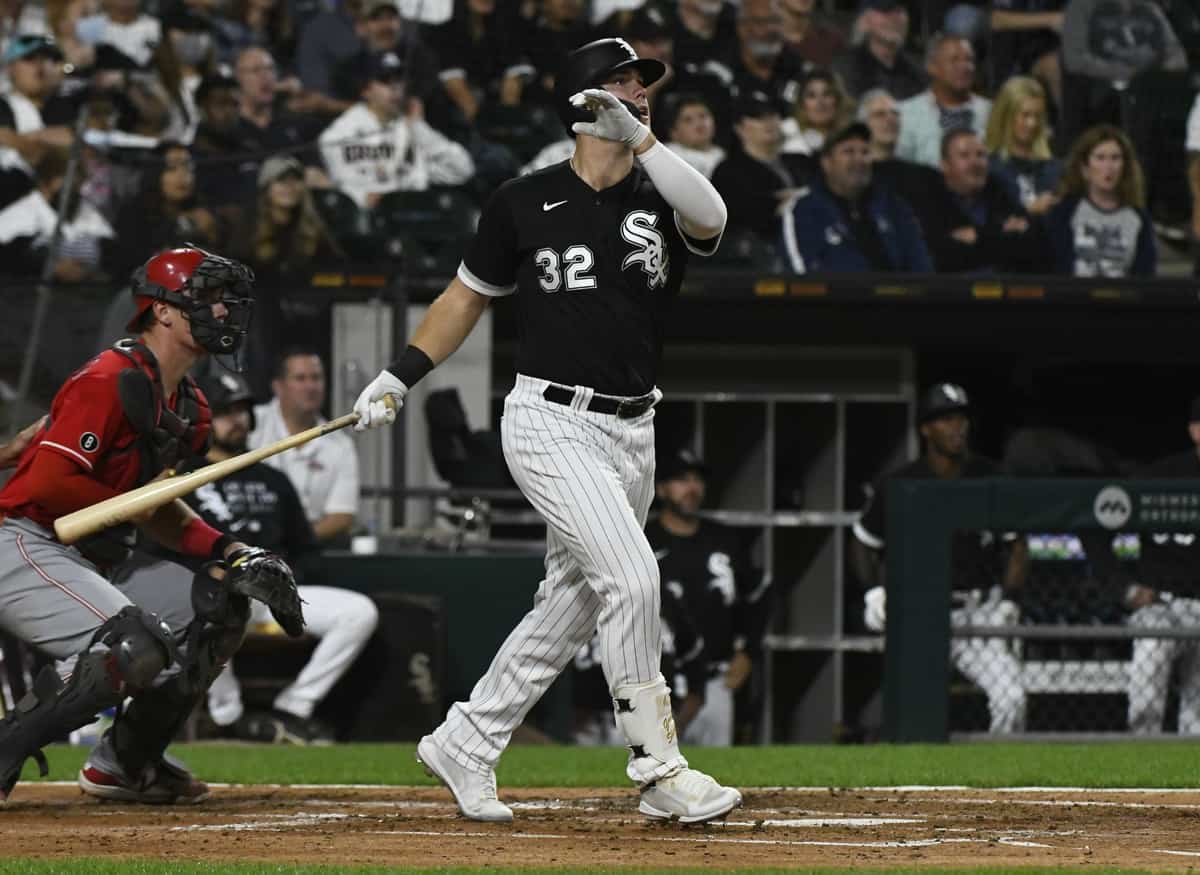Those who like red meat in their diets salivated at the idea of the White Sox and Tigers meeting for a three-game series a mere three days after benches cleared between the teams, but I think it's easy to overestimate the chance of a beef when a beef is expected. Some business remains unfinished, but if you've seen most baseball brawls, players seem to operate with an understanding of the cost-benefit analysis.
Granted, the elements are there. You have Niko Goodrum saying that José Abreu needs to take responsibility for his hard slide into second, and he comes so close to understanding why Abreu was incensed.
"You break my leg, that's an issue," Goodrum said. "Everyone out here is just trying to feed their family."
Including Abreu.
" I've been playing against the White Sox for four years. He's never done anything like that. He doesn't play like that. That brings up more things with me."
There's probably a reason.
Goodrum's stance is understandable on a personal level -- he didn't hit Abreu, so why is Abreu involving him? -- but it comes down to the imbalance between pitchers and hitters. A pitcher can injure a hitter during the conduct of normal business and dismiss it as an accident, whereas a hitter who "handles it" the way Goodrum suggested has to go rogue and flirt with suspension, and maybe even his own injury. Abreu's unnecessarily hard slide into second is the first opportunity he had to execute a normal baseball play as recklessly as Lange did. It didn't involve Lange, but is baseball not a team game?
At any rate, there could be words, but I think the end of the season brings its own gravity for the White Sox. They just want to get out of the series with their postseason roster in the best possible working condition, which is why I'm guessing Tony La Russa could be seen talking to umpires after the game. There might be words exchanged, and there might be revenge gesturing, but one team is going to October, and another team is going home. There are elements of a compelling rivalry, but I'm guessing the next developments will have to wait until next year.
Unless Abreu gets hit again. Then all best are off.
* * * * * * * * *
As for the actual loose ends we discussed a few days ago, none of them are particularly resolved. We still have to see if Adam Engel can play in consecutive games, and then on consecutive days. We still have to see Ryan Tepera back in action, and whether he might be able to handle the eighth-inning role that everybody assumed would fall to Craig Kimbrel, although Kimbrel might have to handle one himself for one last evaluation. Abreu still hasn't hit 30 homers, Tim Anderson hasn't locked in a .300 average, and Lucas Giolito and Lance Lynn haven't gotten their chances to put the final stamps on their season.
The White Sox seemed to resolve another issue that appeared to be settled in a different direction the week before, as Gavin Sheets made a bold claim for the DH job. You could look at it as an unfortunate byproduct of Andrew Vaughn's struggles/health, but Sheets has done what he can to make himself more than a last resort.
There's the matter of his recent production -- .333/.407/.625 over his last eight games -- but how he's doing it is more important.
At the time of Sheets' first demotion, he had the capability for the occasional big game, but pitchers had lulled him into an in-between state by spamming him with slow stuff low, and in attempting to guard against that, Sheets lost the ability to punish fastballs. One way or another, he ended up in two-strike counts that had him hoping for a shift-thwarting single at best.
But his at-bats against the Reds, and specifically Sonny Gray, illustrated the kind of balance you want to see from him.
You probably can't expect Sheets to damage both fastballs and breaking balls at this stage in his career, but the hope is that he can play successful defense against one of them. He succeeded in such a quest against Gray. His first time up, Gray started him off with three curves, and Sheets took all of them for a 1-2 count. Then Gray tried sneaking in a fastball, and Sheets remained on time for it.
The second time up, Gray stayed with the same plan for a pitch longer -- a curve for a strike, a swinging strike, and then a curve in the dirt Sheets checked. After a changeup came nowhere close, the Reds once again felt compelled to go fastball, and Sheets foiled it with a run-scoring single.
When the postseason rolls around, Sheets could have to contend with pitchers who never go away from their secondary stuff no matter how many curves or changeups have failed to get the job done, so he'll probably be asked to do something with a slow strike in the near future. It might be a bit greedy to ask him to master that part of the game now, but while we're thinking about a to-do list, seeing Sheets deliver on a pitch that isn't his favorite might be another thing to watch.
(Photo by Matt Marton/USA TODAY Sports)





